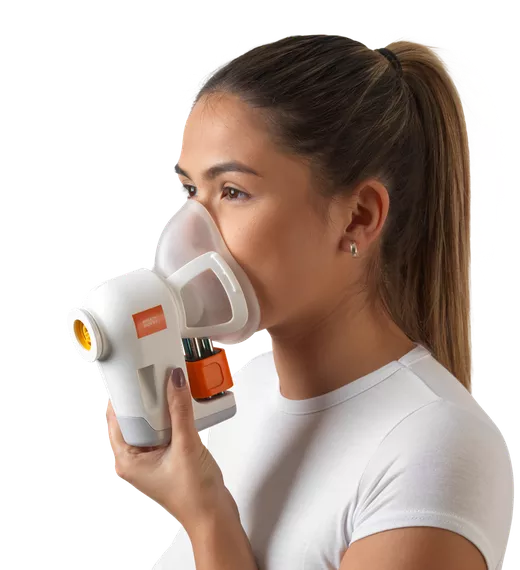VOCs for bronchoconstriction in asthmatic children
| Publication information: van der Kamp et al. Volatile organic breath components and exercise induced bronchoconstriction in asthmatic children. BMC, Allergy, Asthma & Clinical Immunology 2021. DOI: 10.1186/s13223-021-00622-6
Disease Area: Asthma, Respiratory Disease Application: Disease monitoring, Exacerbation detection Sample medium: Breath Products: ReCIVA® Breath Sampler, CASPER® Portable Air Supply, Breath Biopsy® Services Analysis approach: TD-GC-MS Summary:
|
Asthma is one of the most common chronic respiratory diseases in children and is commonly characterized by exercise induced bronchoconstriction (EIB). Evaporation of water in the airway lining, during exercise-induced hyperpnea, leads to osmolarity changes in the wall of the airway. These changes induce mast cells to release mediator compounds, including prostaglandin D4, leukotriene D4, and histamine, causing an inflammatory response and contraction of smooth muscle cells, restricting the airways. EIB can be very difficult to diagnose accurately making it hard to manage and treat.
In this pilot study, van der Kamp et al. seek to explore the association between volatile organic compounds (VOCs) and EIB to understand how VOCs on breath could potentially represent a non-invasive technique for identification.
Upper and lower breath fractions were collected and analyzed for 46 patients with asthma, 21 with EIB and 25 without EIB, and were further stratified into patients using inhaled corticosteroids (ICS) and those without. These samples were collected prior to an exercise challenge test using a ReCIVA® Breath Sampler and were analysed using TD-GC-MS by Owlstone Medical.
Octanal and Dodecane/Tetradecane levels are increased in ICS naïve patients following EIB
Van der Kamp et al. describe a connection with increased levels of molecular features (MFs). Molecular features are identified as a result of spectrometry analysis with each MF the result of a specific VOC in the breath sample. MF14 (p=0.03) and MF23 (p=0.01) had an unadjusted p-value<0.05 for an association with EIB status in lower breath samples (figure 1). Furthermore, MF23 had an unadjusted p-value of 0.03 in upper breath samples. Both MFs had an AUC>0.70 in both upper and lower breath samples.

Figure 1: MF peak areas MF14 and MF23 within the corticosteroid negative patient group.
The two MFs were tentatively identified as octanal and dodecane/tetradecane respectively, which have associations with oxidative stress responses and lipid metabolism. Van der Kamp et al. speculate that these metabolites are the product of the breakdown of inflammatory lipid mediator compounds such as prostaglandins in the airway.
Toluene levels are reduced in patients using ICS following EIB
Contrary, to ICS naïve patients, MF1 had an unadjusted p-value <0.05 for a relationship with EIB, specifically in patients using ICS and in upper breath samples only. MF1 was found to be reduced in these patients, and was tentatively identified as toluene, a common component of air pollution, associated with asthma.
Overall, this small pilot study shows that VOCs may be able to differentiate asthma symptoms and could help to predict clinically relevant phenotypes, helping to guide effective treatment decisions. Larger follow-up studies would be required to validate the above findings, due to the limited sample size of this pilot study.
If you are interested to learn more about how Owlstone Medical’s Breath Biopsy Services could help you to study diverse asthma phenotypes, find out more on our Breath Biopsy Services page or get in touch with a member of our team.
